I’ve been wanting to talk with a UX designer because they are the bridge between consumer behavior and communications. Their job is to create journeys, anticipate barriers and design elegant intuitive interfaces. The best designers practice extreme empathy for humans, so I was thrilled when I found Kat Vellos through a colleague who knew she’d just left her job at Slack to pursue her dream of helping other people create meaningful friendships. Like so many other people I interview here, her new career came from creating a solution to a personal problem. When she moved to the Bay Area, she struggled to find community so she did what any good UX designer would do — extensive research on the subject which led to her writing a book to help others map out ways to find a sense of belonging and community through friendship.
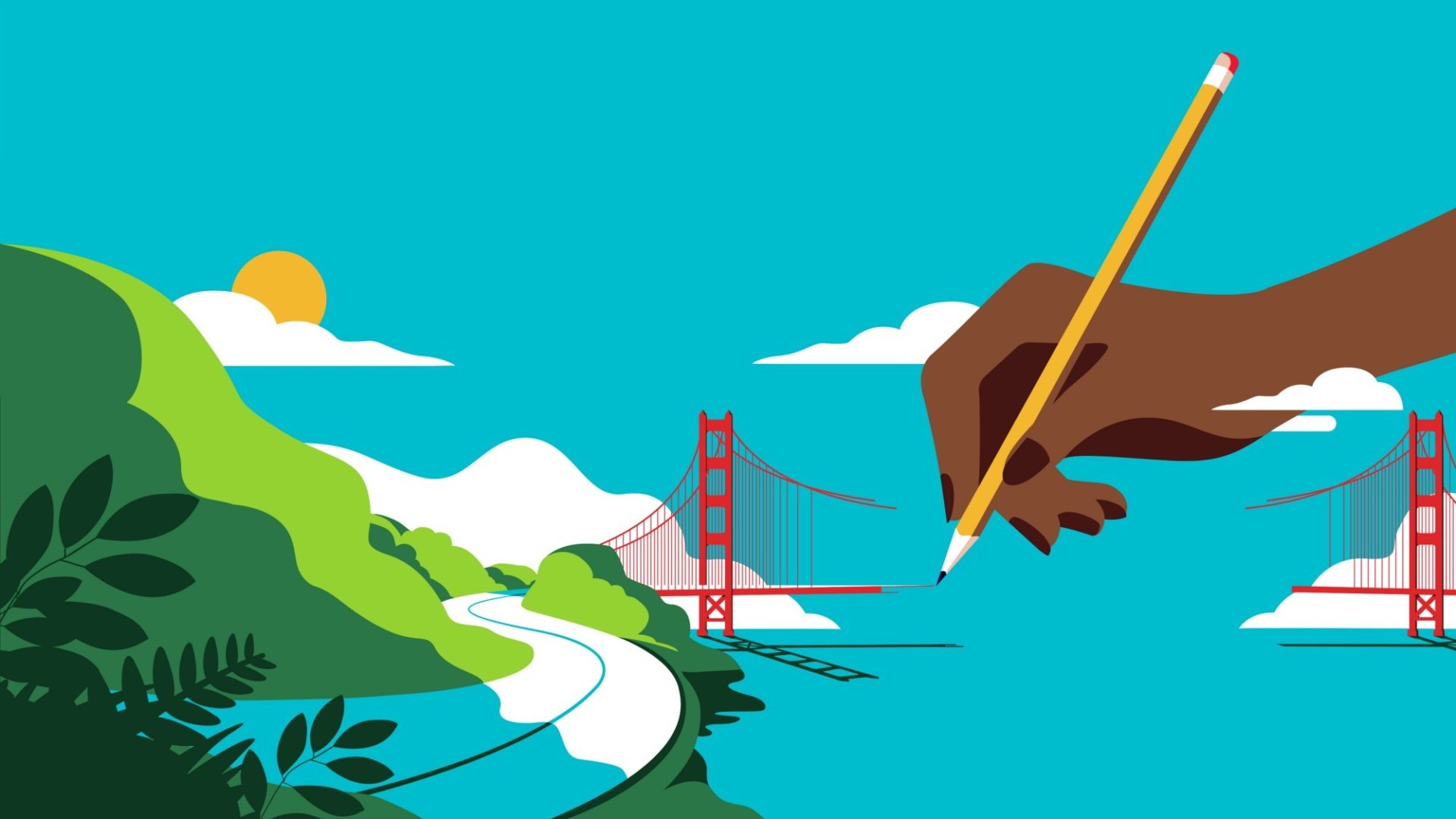
“Over the years I’ve created different kinds communities to help people meet their needs or served as a facilitator to help people find a sense of belonging.”
It seems that you’ve had two careers — One in the for-profit world and one as a volunteer, mentor/activist. Why you have chosen that for your development and how have the two worlds informed your development as a designer, author, and activist?
Early in my graphic designer career I was really active in my community, doing a lot of mobilization around equal rights, self-expression, LGBT rights, as well as the rights of artists and creators. A lot of that was because I wanted to introduce more justice into the world through fighting for the things that I cared about. Activism doesn’t always have to be in the form of a demonstration. Anytime a person takes action in the world for a thing they care about, that is a form of activism. It really comes from seeing that something is not as right as it could be and then taking action to make it more beautiful, more available.
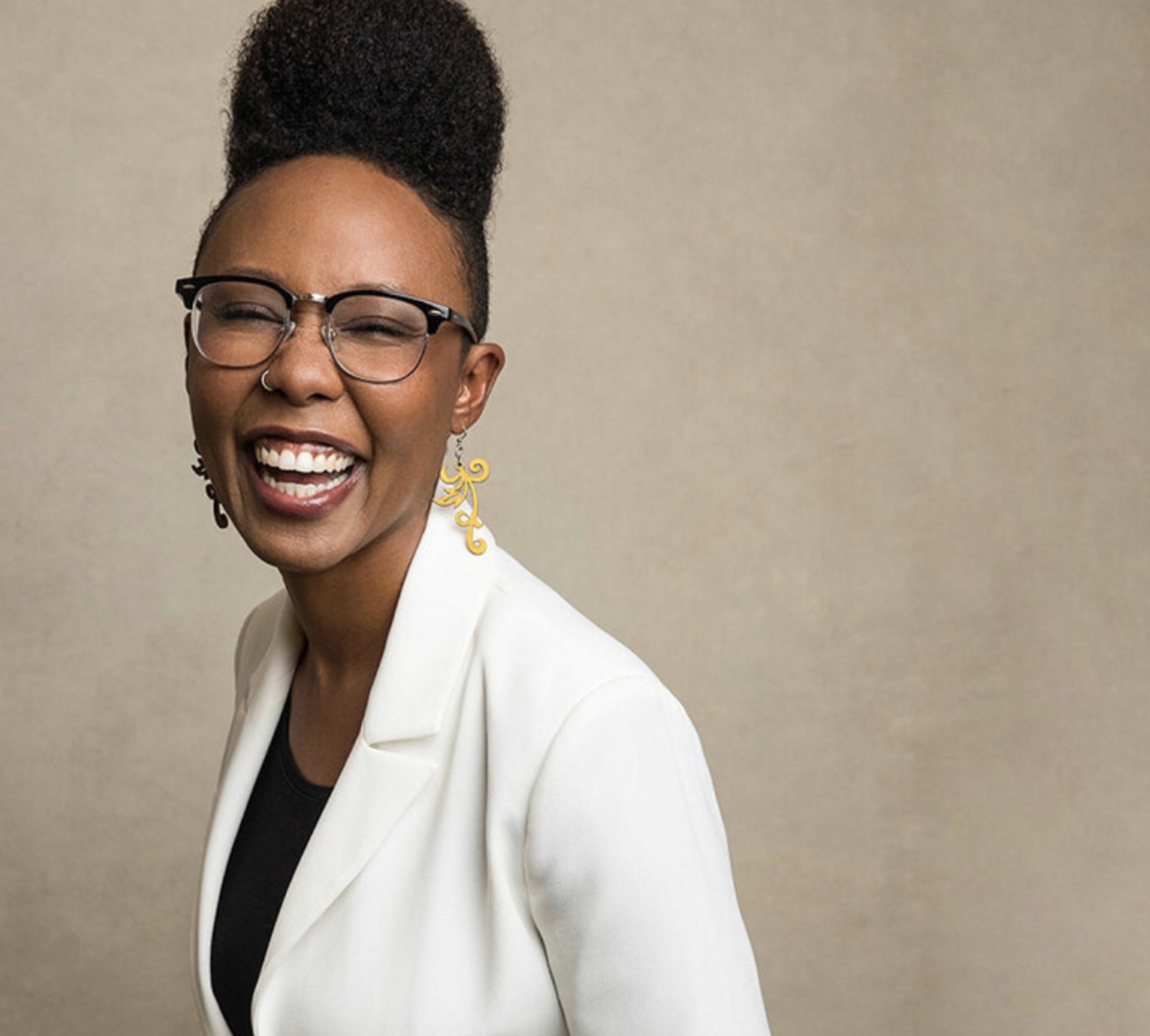
Kat is currently giving talks and workshops on how to cultivate meaningful connection both in and out of the workplace; belonging and diversity in tech, and how to employ user experience design to create more empathetic and successful products and services.
You’ve mentored teens to help them activate their full potential through creative writing and skill development. What is the sweet spot to get to somebody before they have felt that they’re no longer creative and where they can still be open and develop that creative persona?
What immediately came to mind when you asked that was the Pablo Picasso quote around “every child is an artist,” and the problem is to just keep remembering that as they grow up into adulthood. I don’t know that there’s a specific age for every person, but different things happen in our lives that leave that channel to creativity open or close it off. Unfortunately, one of the places where I see it getting closed off very often is in school.
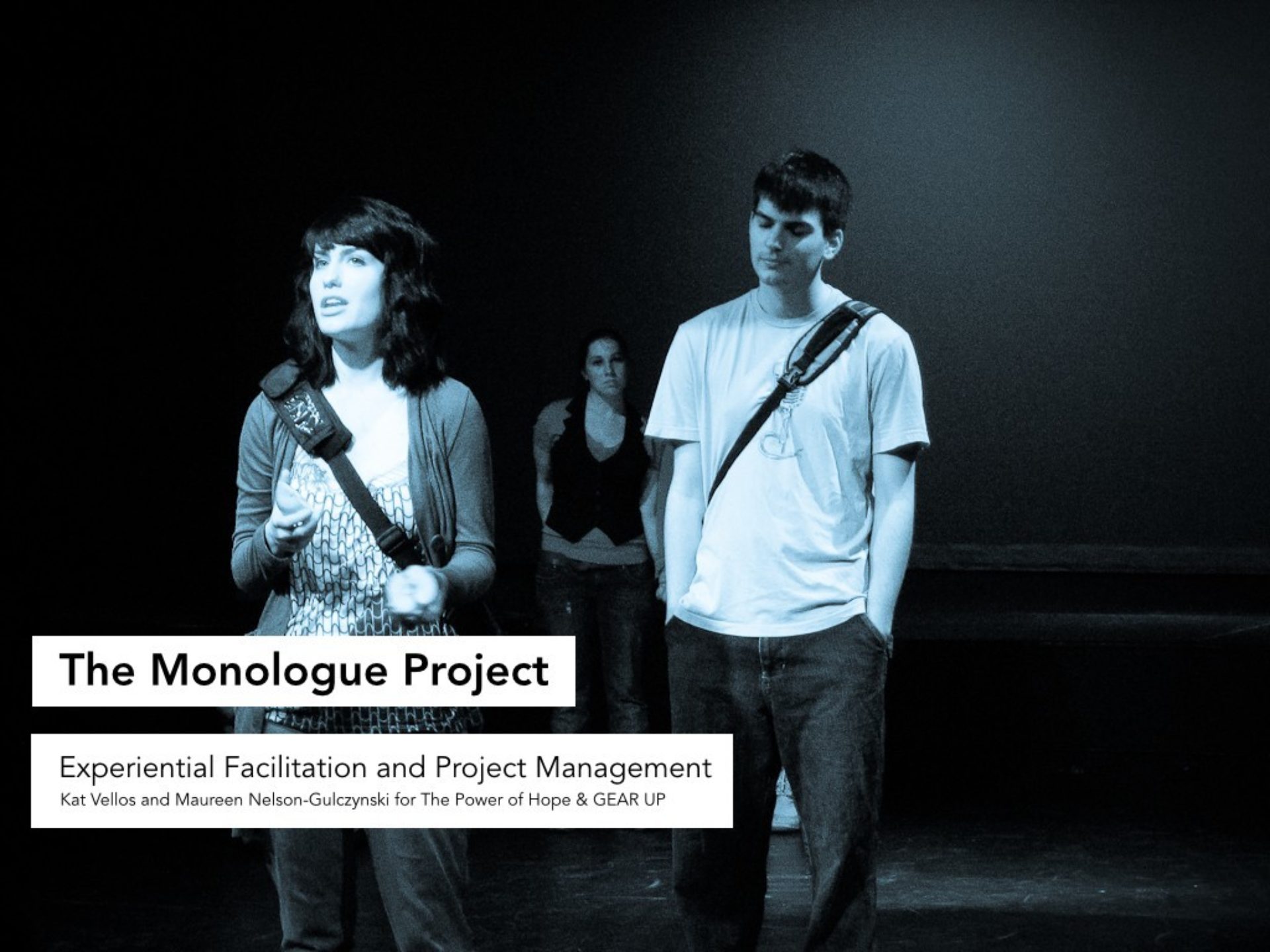

“I was a co-lead for the Monologue Project, an autobiographical monologue-writing and performance project. It connected middle-schoolers with college students to foster greater self-expression, development of personal voice, community connections, and enthusiasm for going to college.”
On the flip side, people quickly get shut out if they’re not someone who shows a ton of early natural talent. It’s like “my brother’s the creative one” or “my sister’s creative, so I guess I’m not creative”. That’s just a lie. Every single person is creative and just like any other skill, it is something that can be practiced and developed and expressed in a multitude of ways. An accountant is certainly very creative in ways that I don’t have the same skill for. Being creative with how you cook a meal or how you read a book to a child or how you create a garden or how you design a building, all of these things are a form of creativity andit’s unfortunate that our society has a really limited definition of what an “artist” is and who gets to claim that.
You obviously have a high sensitivity to the world and are very attuned to what’s happening in the world and your role inside of that. Where does that come from?
My childhood was not always the most supportive of being expressive. It was right after college when I started to flex that muscle more of seeing something that could be better and having that sense of power and agency that comes from that. The person who stoked that fire was my best friend who I met the summer after I graduated college. We became roommates and we happened to meet when we were both at this phase of life where we got super active about the world, super engaged. We both were very experimental with taking things in and feeling the need to create something or mobilize people.
We were on each other’s team to make things happen no matter how wild the idea was. Having that creative encouragement fed that fire within me and cemented it as a part of who I am.

“This is from my redesign of the anonymous listener experience at Pandora.com for a user who has come to the site and launched a station but not yet created an account or logged in.”
UX is such a growing discipline right now and I imagine even when you started and then till now, it’s changed a fair amount hasn’t it?
Yeah, I think it’s changing all the time. That’s something that’s really exciting about the field. It also never gets away from the basics.
One of the things with UX is that a lot of people only think about it as a technical skill versus what is maybe the heart of design. There’s a great need for empathy.
Were there specific instances or skillsets that you got from doing all of your mentorship or volunteering work that you were able to apply to your daily work as a UX designer?
Yeah, there’s a lot of overlap. People think they’re unrelated skills where in reality they’re the same because you can’t do either one without having a skillset that applies to both UX and activism.
The first thing is caring. Do you give a crap? Do you care about the people that are being affected by what is happening in the world? That is as present in an activist frame of mind as it is in user experience design.
The next thing is intentionality. Nobody creates change in the world or a really effective user experience design if they’re not being intentional and practiced in their thinking of how can this be better, and what are all the different ways or different paths that I can choose to try to make this better?
You’ve worked at both Slack and at Pandora, both not necessarily startups when you were there, but new companies. Do you think that the permission for creativity across the organization is greater there?
There’s probably some assumption that a younger company would be more open to those sorts of things than a financial institution that’s been around for 100 years or something. I work in Silicon Valley and this particular region of the country tends to draw a lot of people and businesspeople who have more of an open mind towards being really experimental and having creativity in the workspace.
Regardless of the nature of the company or where they’re located, it 100% has to do with the mindset of the leadership. The leadership and the values they embody and the way that they express those values in their world and in their work is what leads to their staff, their company, their community of work also embodying those values.

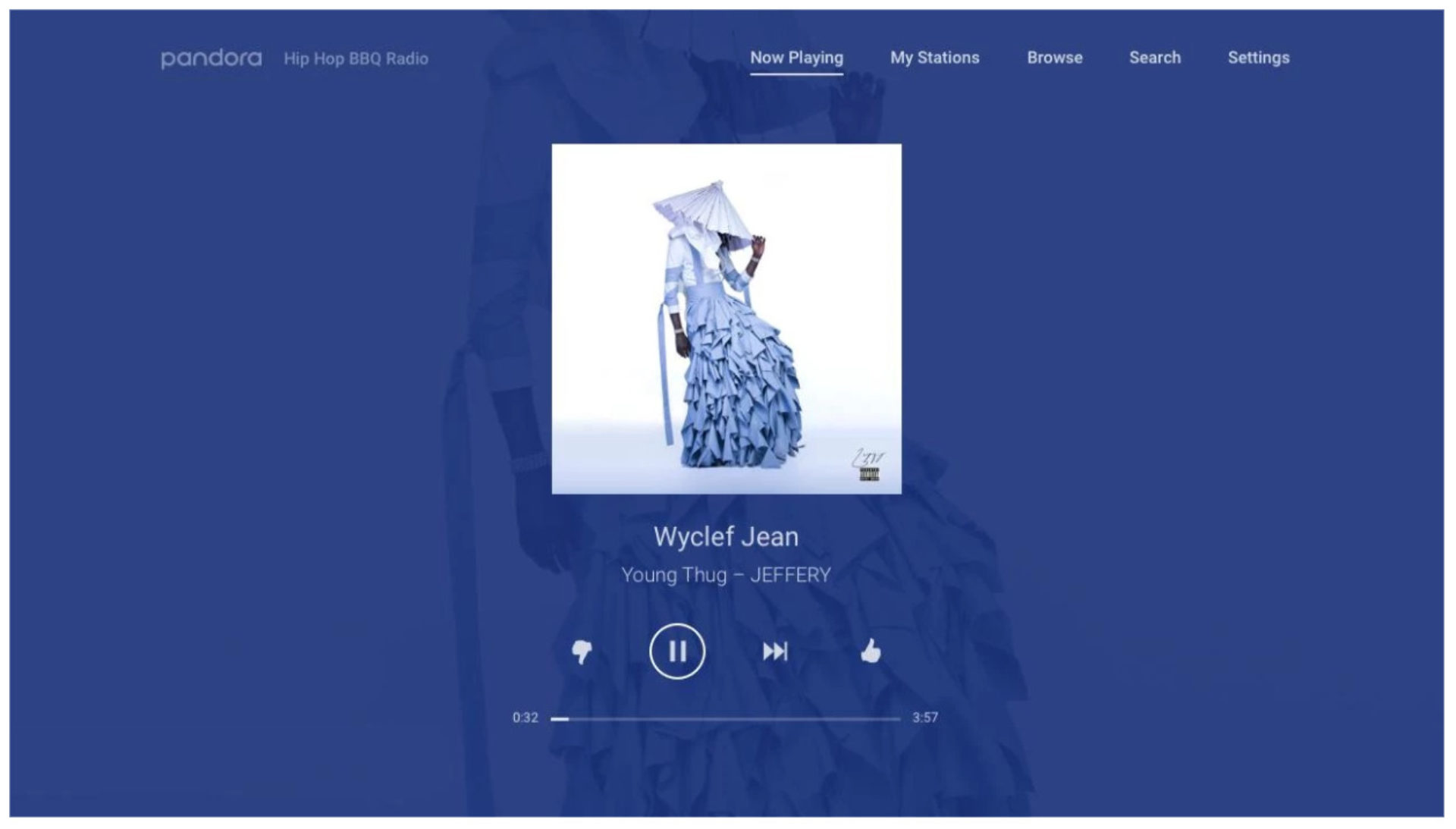
“I collaborated on this project to redesign the Pandora app for AndroidTV. Working together closely, we developed a set of interaction rules and product requirements that would dramatically improve the user experience on not just the Android TV product, but the entire suite of HTML5 Pandora apps.
Can you share what your role was at Slack and Pandora?
I was at Pandora first and there my role as a UX designer and product designer was 40/60 or 30/70 research and design. I was a designer on the team that was serving the listener audience. I was focused on creating products and interactions across different platforms whether that was on TV or app or desktop, the signup experience.
“My role at Slack was much more focused on product design than research. Everybody on the design team had a blend of UX and UI skills: designing beautiful interfaces that increased the user success and feelings of trust, safety and transparency was our goal. [Working at Slack also came with] a sense of intimacy, due to the access and closeness that Slack offers as a communication tool. It’s a massive company, yet it felt so comfortable and easy to just message anybody and to reach out to them. There’s a sense of informality that I think Slack brings. It’s a real strength.”
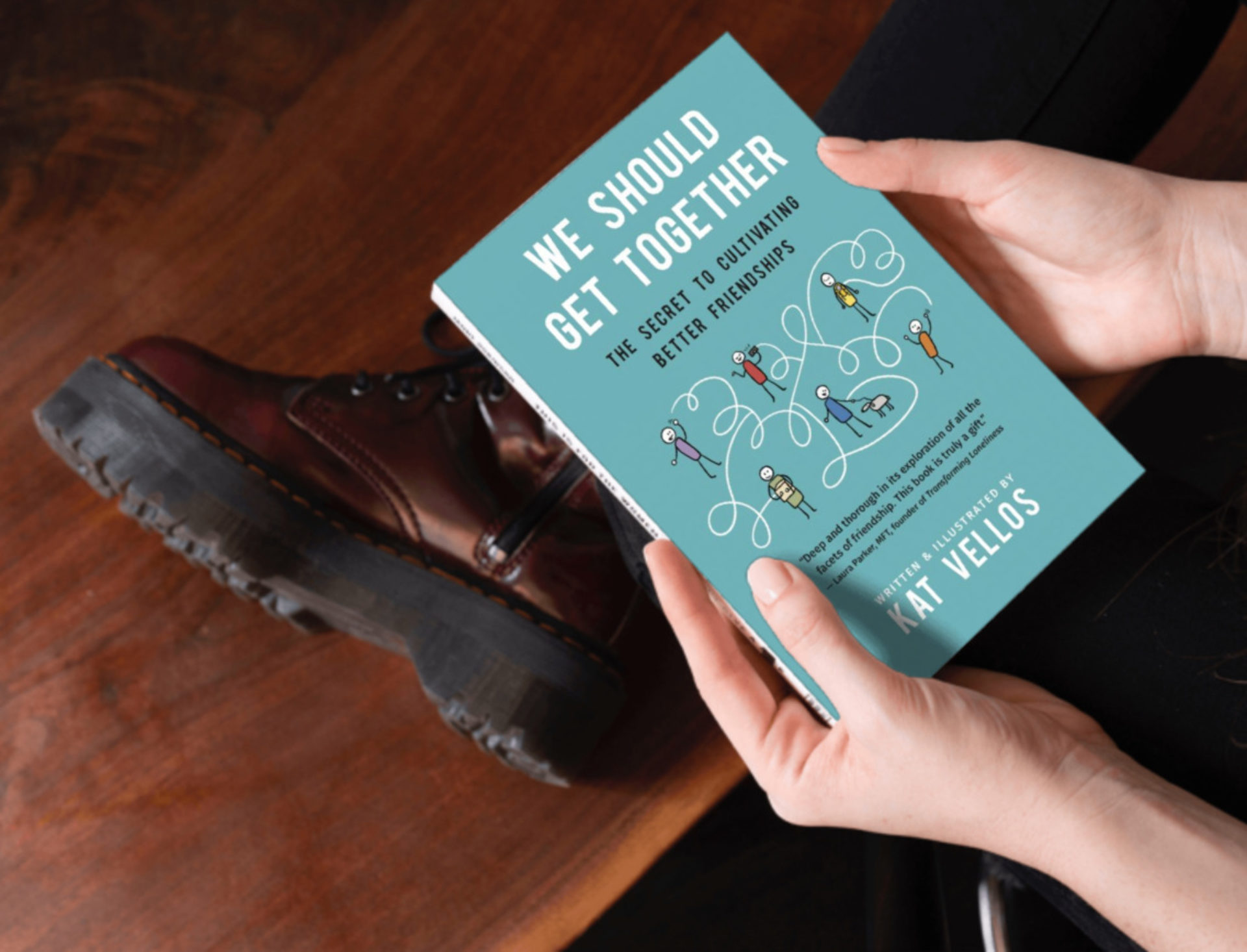
“I’ve moved around. I lived in Florida, Seattle, and Hawaii. I loved the Bay Area but one of the things that was perplexing was despite meeting cool people, I was having a hard time establishing a regular friend group.”
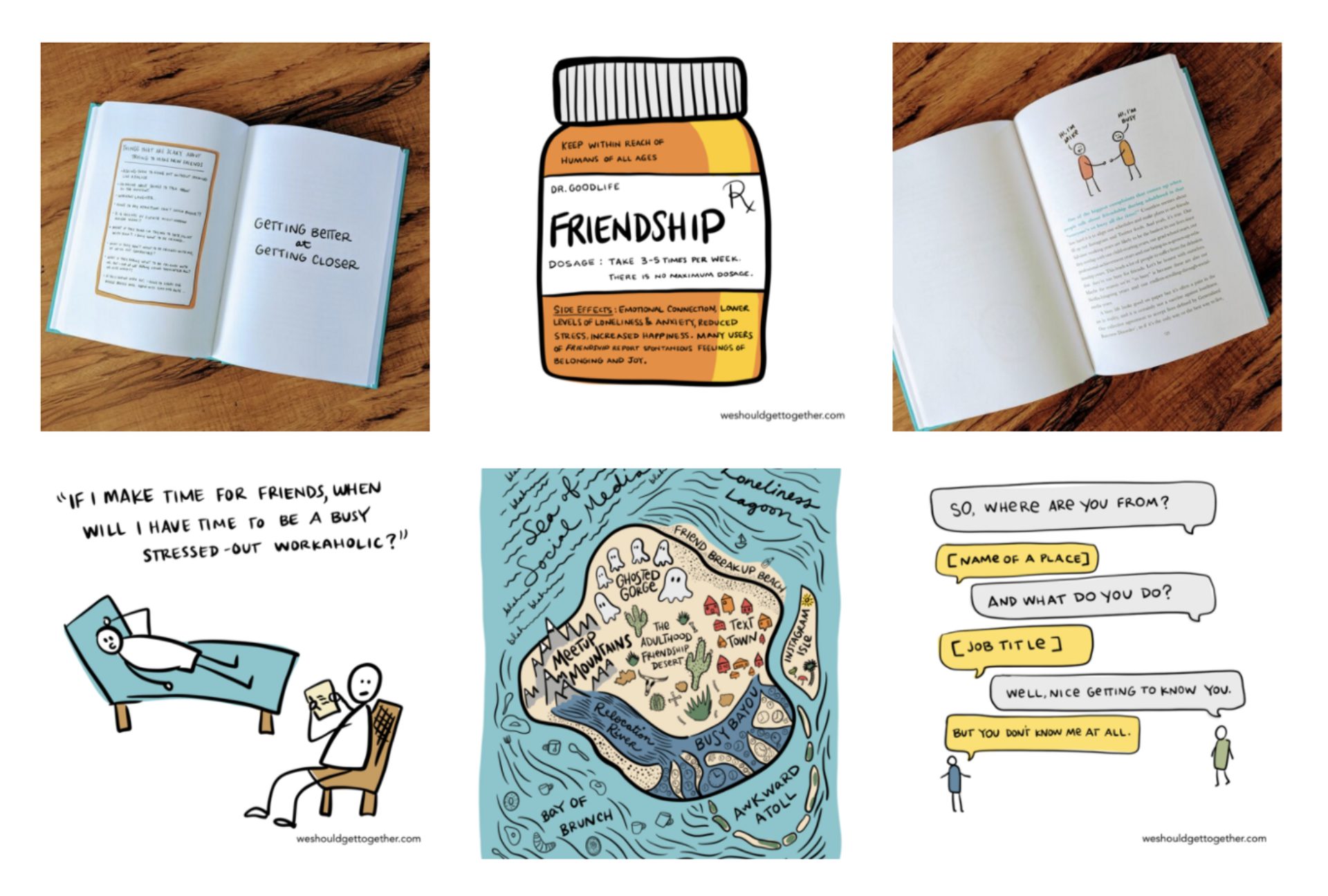
“As a designer who’s worked in publishing, I knew I wanted to do the layout and typography myself. I wanted to own that part of the process.”
I’d love to talk about the book that you wrote, “We Should Get Together,” and the work that you’re doing today.
I worked on this book off and on over the last five years. It’s partially based on my fascination with the subject matter of adult friendship. I’ve moved around a lot and one of the things that was uniquely perplexing was that despite meeting really cool wonderful people all the time, I was having a hard time establishing a regular friend group.
I started talking to people about it and acquaintances would tell me that they also had the same problem and they said, “Oh, I thought it was just me. Or maybe I’m not trying hard enough.”
As a UX designer, I can’t help but feel an impetus to take action when I see that people are having a difficulty achieving a certain goal. I spent time researching the topic of connection and belonging to identify what the nitty gritty ingredients are for a healthy thriving friendship.
I was writing and researching a lot, and ultimately, I got to a place where I had so much content and I knew the format it had to take was a book. As a designer who’s worked in layout and typography I wanted to create and own that part of the process.
When I put it into the world, it resonated right away. People are struggling and they don’t know what to do. I created a tool that looked at the four biggest problems adults face when trying to form adult friendship and created strategies to try and address and fix that problem. I just got such a wave of positive reception and people saying, “We need this. We want your work. Will you come and do a speaking gig, or will you come and teach a workshop, or can we do some coaching with you?”
I had to make the decision to say yes to this work that is clearly pulling me into the world in a different way. There’s a great demand for this work and it feels so connected to my life’s mission and what matters to me so deeply in my heart. That is why I left Slack.
As you talk about forming adult friendships, do you think that there is a similar thing happening inside the workplace as well?
Work is one of the places where adults typically find their friendships because you have access to a reliable group of people on a consistent basis. One of the things that I talk to folks who lead teams about is that the same qualities that lead to a healthy friendship are often replicated in a healthy colleague relationship. So, it’s important to foster a sense of feeling truly seen and truly heard. If companies can create healthy colleague relationships and there is a high degree of trust and collaboration, then they will have not just better outcomes in the products and services they’re creating, but they will be saving millions of dollars on not having to rehire and retrain people every nine months.
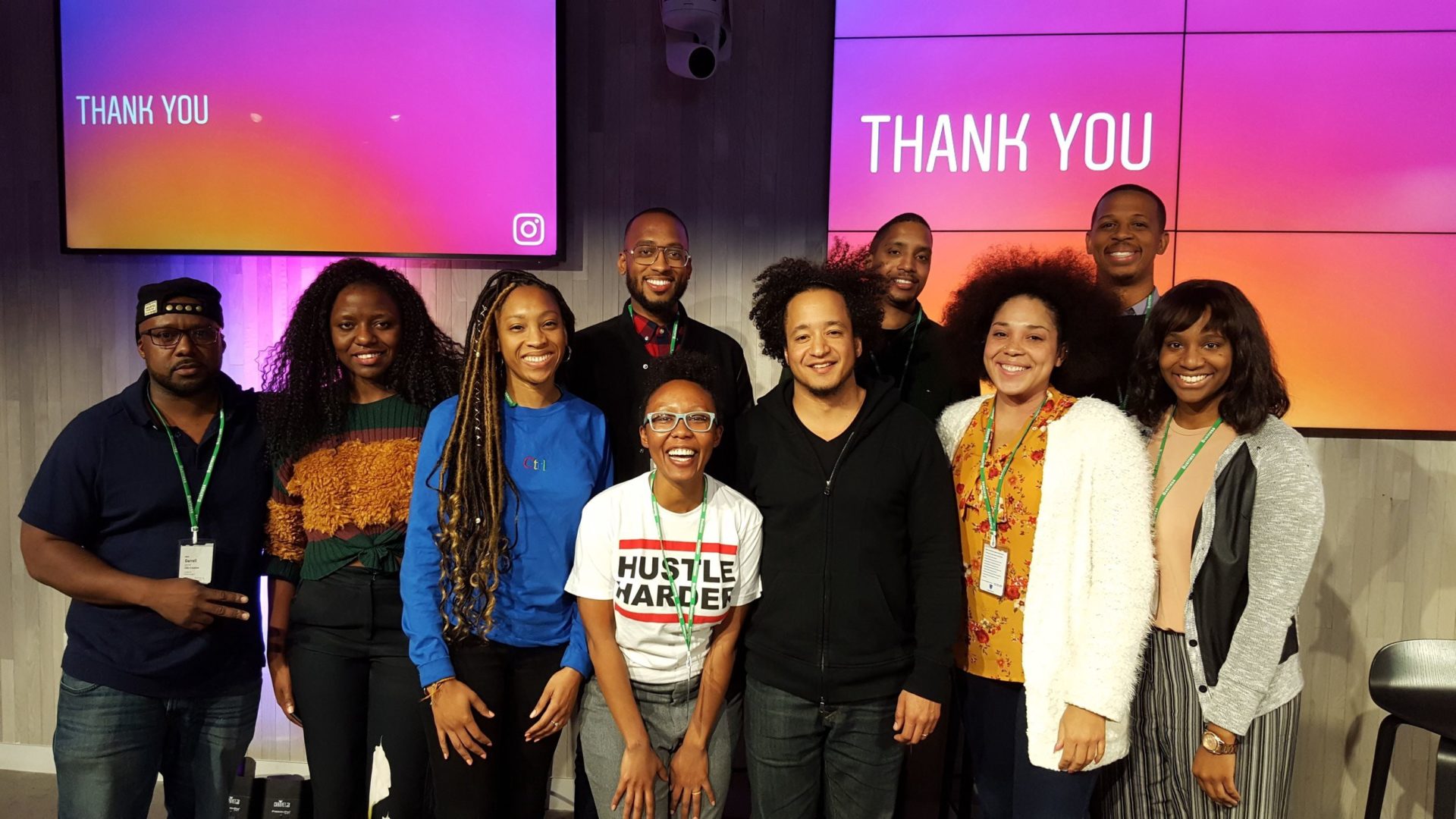
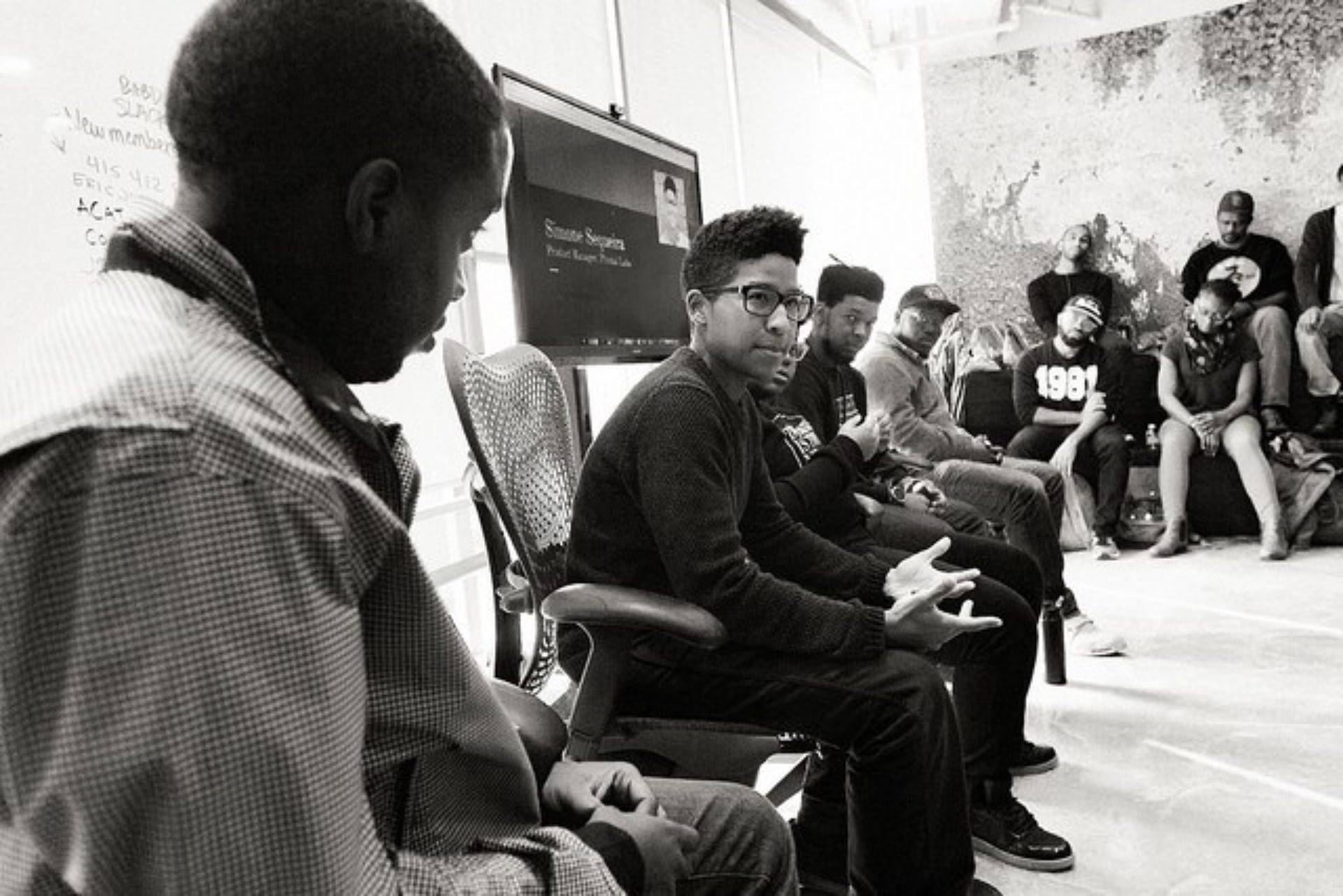
Bay Area Black Designers was founded by Kat Vellos in 2015 as a professional development community for Black people who are design professionals in all areas of digital design at every level from beginners to experts.
You founded the Bay Area Black Designers community in 2015. In the advertising industry, we are so focused on diversity and inclusion across the board, but at the same time it does seem like there is a chasm in black people entering in design and advertising which I know is part of why you started this group. Why do you think that is?
When I was in design school, I didn’t see a single black designer in any of the texts, in any of the examples. I was lucky to have a high school art teacher who told me I’d be a good designer after looking through my sketch book. It was her really seeing that ability in me and encouraging that because I didn’t have any exposure to anybody who looked like me who was doing this job I hadn’t heard of. When I looked at my design heroes through graphic and visual design, there were not that many black people.
My story has been echoed in stories of the members of our group. One of the many things that the group has given people is a sense of normalcy and belonging. Being able to walk in a room with 25 or 50 other black people who also care about design and practice your craft is an amazing feeling. We went from a group of five people on my living room floor because that’s as many as I knew when I started, to now where we have over 500 members across the Bay Area.

What connection needs are you seeing in people right now during a pandemic? Are they feeling disconnected? Has working remotely introduced a whole new layer that you hadn’t even thought about before?
Right now, is a very, very unusual time. Our lives are disrupted, routines are disrupted, and we need to keep our distance for good cause. I’m seeing two trends really strongly in the people who are coming to my workshops and groups. People are either feeling overconnected because they’re spending all day and night on Zoom which can be very draining. It’s like a weird cognitive, record scratch. You’re like, “Wait, I just spent all this time with all these people. Why do I still feel emotionally disconnected and exhausted?”
The other thing that is happening that I’m concerned about as well is there’s a lot of folks who actually aren’t feeling virtually connected. They’re wondering how other people are getting invites to happy hours and eating dinner together with other people or they’re wishing that they had a regular crew of people or even a regular person or two to check in with. The loneliness epidemic was already at scary heights before this started which is part of the reason I wrote my book. There is still a swath of people who are not getting their connection needs met during this pandemic.
We were already needing digital detox retreats before this started and now it’s to the max. Connection isn’t the number of people you know, it’s the depth and quality of the connections that you have. That is something that I think is really important to keep top of mind when people, especially right now, are thinking about how to feel less anxious and more meaningfully connected.
Okay. Last question. I always ask everybody I talk to is how would you define what beautiful thinking is?
Beautiful thinking is thinking that connects the heart, the mind, and the spirit at the same time.


